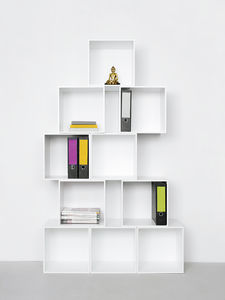
Adjust the saw fence to 12 1/2 inches from the near side of the blade and cut each piece again to create a 1-inch-wide rabbet along the back edge of the cabinet sides to accommodate the back panel and the cleat and nailer.Cut a dado groove along one long edge of the face. Place one of the side panels, with the rabbeted side facedown on the saw table and with a long edge against the fence. Adjust the saw fence so that it is 12 inches from the near side of the dado blade.

Repeat with the other cabinet side piece. Rip a dado groove in the center of each cabinet side panel to accommodate the center shelf.


Turn the cut piece of plywood so that the short edge is against the fence, and rip the piece in half. Adjust the saw fence so that it is 24 inches from the blade.Cut a 26 1/2-by-48-inch piece from the 2-by-4-foot sheet of 3/4-inch plywood. Set up your table saw with the fence positioned 26 1/2 inches from the blade.Use fixing devices suitable for the walls in your home, sold separately. The max load for a wall-hung cabinet depends on the wall material.ĭifferent wall materials require different types of fixing devices. If you choose the soft closing function for your BESTÅ, we recommend complementing the fronts with knobs/handles to make the drawers/cabinets more convenient to open.īESTÅ suspension rails for wall mounting are included. Use BESTÅ top panel, sold separately, to cover the joint between the frames and create a uniform look.

This combination is made of several separate units. Optimise and organise your BESTÅ storage with boxes and inserts that you like. A wall-mounted solution creates a clean, modern look and makes for easy cleaning of the floor underneath.Īdjustable shelves, so you can customise your storage as needed.Īdjustable hinges allow you to adjust the door horizontally and vertically.ĭoors both protect and decorate - choose a door that matches well with your home and storage combination.


 0 kommentar(er)
0 kommentar(er)
